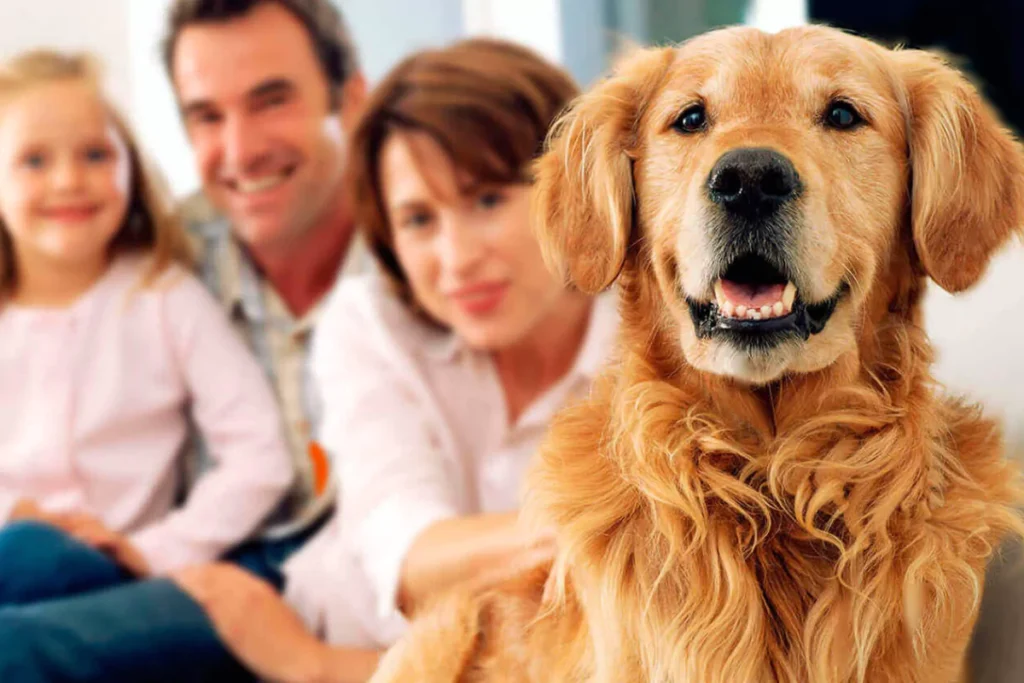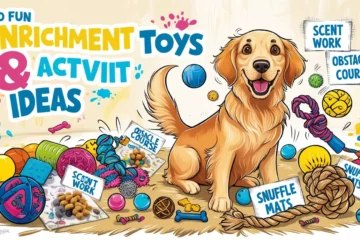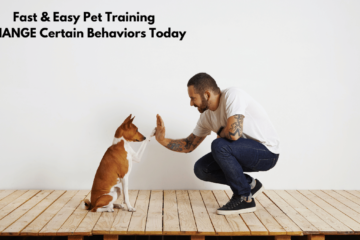Hello, People! Have you acknowledged the pet companionship? One area of the senior care world has risen to prominence: a pet companion’s power to improve older adults’ health. Then, when our loved ones get old, we have this endless list of things to get done.
And although the furry friend is not all that, it is still making for a great cure for physical, mental, and psychological wellness. In this blog, we will discuss research, my personal experiences, and practical ways our pets help the lives of our elderly loved ones.
Let’s discuss it!
Table of Contents
Benefits of the Company Companionship

Less Loneliness, Less Emotional Support
Older people tend to be lonely, lone elderly, or widowed. As more and more studies prove the effectiveness of pet ownership in reducing loneliness, that side of the equation is starting to get some play.
It’s the ‘love hormone’ oxytocin we get when we put our hand on a dog or a cat; it’s the hormone that makes you closer and closer to your other human. As did so many seniors’ pets, unconditional love and unconditional company when aging fill that emotional void.
Increased Physical Activity
Dogs and other pets will make you work out more, too. The elderly adults are encouraged to move as the games play on at such fast speeds, play cards – the other in the playtime or the basal care routines, skipping the traditional walks. This extra mobility is important because it keeps the body physically healthy and improves cardiovascular fitness and strength.
CDC research says pet owners are more active than nonpet owners. Physical activity is also great for our physical health. Still, physical activity also has a massive impact on mental health, and that is why it produces endorphins that fight stress and anxiety.
Improved Mental Health
But it’s also been found that people with pets are less likely to get depressive or anxiety symptoms. And it’s a good thing to have a pet around for the seniors or the folks that maybe weren’t as close to having all the friends or people around all the time. Being with a pet helps us be more cognitively engaged, meaning more mindful, and being more cognitively engaged and mindful is good for our mental health.
Furthermore, many of these therapy animals are trained to interact in the presence of seniors. In contrast, the seniors are being trained in a straight way with the seniors in a caring and companionship manner, which can be a positive interaction, too, and puts you into a better frame of mind about life.
Community Engagement and social interaction
This means, in other words, that they are social facilitators. Walking a dog can be social: If you decide to walk a dog or go to a pet-friendly event, you can set yourself up for interaction with other pet owners. Left on its own, interactions fight off isolation, and it can be a good supportive community for the elderly.
Even turning to pet ownership can help bring up heroes; it can even help set the stage for bigger conversation, a cute animal story, or tips on caring for your neighbor’s pets. Well, it’s obviously very social and can really make a difference in their quality of life because they feel like they’re part of the world, and they never really stood up very well after their heart attack or their stroke.
Routine and Structure
Give your pets their routine, and they will be good for you, too! Compared to the physical schedule for this exercise, such as when older adults feed their pets. And this is the super routine ability to do this. I find it super helpful when life just creeps in, and there are aging things that happen, and you just have to cope because at least now you have some normal state of mind and something to do.
Physical Health Benefits
The benefits of owning a pet are well known: it decreases blood pressure, sterol, and triglycerides. Pet ownership is good for your heart — and the American Heart Association understands. This strengthens the physical state, subsequently allowing relaxation and reducing perceived or general stress.
A pet is good for your immune system as well. Older adults tend to have a weak immune system. Still, stimulating an older immune system and decreasing the frequency of illness is likely due to prolonged contact with pet dander and microbes.
Safety and Security
Other people older than you can also be pets’ security blanket. Of course, there are plenty more — dogs can be protectors as an example of alerting their owner to unusual sounds or warnings of possible danger. Radlon says seniors will be less fearful of coming into contact with people, allowing them to maintain more assurance in living independently.
Cognitive Engagement
An ideal pet for seniors who want to enhance their cognitive function is to take care of a pet. Training a dog is a great way to get your mental time up, and activities like solving your pet’s problem can also benefit your mind. They’re both fun and incredibly mentally stimulating.
The study demonstrates that keeping these tabs might even create a cushion against the onset of cognitive decline in older people. But this cognitive engagement is doubly beneficial for those with conditions like Alzheimer’s or dementia; namely, the structure of routine, even a temporary one, can be conducive to familiarity and comfort.
Bridging Generational Gaps
Then there are pets, which can also be a way to fill architectural gaps and span generational ones. Pets bring families together: Dogs and cats get grandchildren to play with the family, not Grandma or Grandpa.
This will be something we will all have in common, even if it is something family members begin to bond together about and begin to attempt to make sense of the family interactions. Connecting to your family, to your real family, has an extremely high quality of life for seniors; it feels like you’re a part of a family, you’ll belong.
Choosing the Right Pet

While the benefits of a pet companion are obvious, if you want the right pet for your elderly loved one, that means finding the right breed. Here are some factors to consider:
Assess Physical Ability
Imagine the freedom to move your loved one. The key is to consider what a dog bigger than a senior may need regarding exercise and energy compared to a smaller breed or cat.
Consider Lifestyle
Think about what your loved one does or does not do daily. If you like a quieter life, you could do better with a more independent pet like a cat, and if you’d like to raise the levels of activity and social interaction, a dog could be more palatable.
Make sure they are allergy and health checks
Don’t take any chances if your loved one is allergic to pet dander or for other reasons. That is where they may require more care and grooming than your pet, which may factor into seniors with disabilities or other health problems.
Explore Alternatives
If you can’t take the time to be a pet owner, try one of the alternatives: fostering pets, visiting animal shelters, or even compact pet therapy programs that bring the animals to senior care facilities. The companionship options have you without the long-term commitment of complete ownership.
Making It Work
Brought into the life of a pet, older people need careful planning and consideration to prepare for their presentation to you.
Here are some tips for ensuring a smooth transition:
Prepare the Home
The living space should be safe and comfortable for your loved one and the pet. First, remove any hazards that could be dangerous to an active pet, and then you will want to ensure that there are comfortable places for the pet to rest.
Establish a Routine
Feed, walk, and playtime should be a daily routine. Not only does it keep older adults structured, but it’s good for the pet.
Encourage Interaction
Help bonding your friend with the other pets. Groom, play with, or even sit together doing nothing. The more it’s used, the stronger it’ll be.
Seek Support
If you can, look for family members or friends to take some or all responsibility for pet care. This support network helps to bear some of the burdens, most importantly so that the pet does not become the stressor.
Monitor Health
The pet must be checked regularly by a veterinarian to stay healthy. It can be worked on by working on the health problems. The older adult and the pet must be protected by vaccination and health checks.
The following video explains about an image of Choosing the Right Pet:
Conclusion
Our elderly loved ones have the greatest pet bond of all time with their pets; it is the most powerful gift any pet can give. Companionship, physical activity, plus the ability to extend social networks and even cognitive function: A pet can be a gift to emotional health.
We as families and caregivers need to think about our aging loved ones and consider pet companionship might be good for them. We can do what we can to give our seniors a more rewarding, vibrant, and engaging atmosphere if we pick the perfect pet that fits into our lives properly. A wag of a tail or a gentle purr is not the world of difference if they aren’t your pet.
FAQ
1. And how does pet companionship help older people emotionally?
Having pet companions decreases loneliness and depression in seniors. Pets, companionship, and purpose help materially improve emotional well-being: unconditional love from them.
2. Then what is it about pets that have the seniors moving?
It also drives seniors to be more active because pets, especially dogs, need regular walks and playtime. The better the heart, the better the heart, the better the flexibility and fitness.
3. Can pets help decrease stress and anxiety in older people?
The medication and research suggest that pets have interacted with and ds have been able to lower cortisol levels (stress hormone) and increase oxytocin (the relaxation hormone and therefore reducing anxiety). That calming effect comes from having a pet.
4. What social benefits do pets have for older people, then?
The social role pets play connects seniors, nearly all living alone with others. Interacting and being less isolated can get us together, as can dog walking or participating in dog events.




